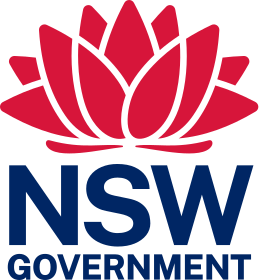Operational noise - Albion Park Rail bypass - Princes Highway upgrade
Project overview
Transport for NSW has completed an extension of the M1 Princes Motorway between Yallah and Oak Flats to bypass Albion Park Rail.

Transport for NSW follows detailed procedures that provide a consistent process across NSW for the assessment of traffic noise impacts. Road traffic noise assessments are guided by the following documents:
- NSW Road Noise Policy
- Transport for NSW's Noise Criteria Guideline
- Noise Mitigation Guideline and Environmental Noise Management Manual.
Road traffic noise (also known as operational noise) was assessed and mitigation measures were developed as part of the Environmental Impact Assessment (EIS) in 2015, and the Submission and Preferred Infrastructure Report (SPIR) in 2017. The EIS and SPIR detailed operational noise mitigation measures to be included in the project, based on a concept design.
A further assessment was carried out on the project’s detailed design. This assessment is summarised in the Operational Noise Mitigation Report (ONMR) which you can find in the documents directory below. The ONMR documents how the project’s operational noise obligations have been addressed the project’s Conditions of Approval, industry standards and contractual requirements.
Transport for NSW seeks to reduce road traffic noise at the source through careful road design and mitigation measures such as lower noise pavements, noise walls/barriers and earth mounds. Where noise goals cannot be achieved through at-source measures, the next step may be to implement at-house noise treatments.
Community information
Frequently asked questions
What is operational noise?
The new motorway will provide a source of road traffic noise in areas nearby. This is what we call operational noise.
In cases where sections of the motorway goes through new areas or is closer to properties, there will be increases in the level of road traffic noise.
In other cases, where the highway is further away or the project is within the existing corridor, there would be less of a change in the level of noise or the noise level may decrease.
How is operational noise assessed?
Transport for NSW uses the same methodology and guidelines for management and mitigation of operational noise on all state roads.
The NSW Environment Protection Authority Road Noise Policy states what traffic noise levels at houses should be for new and upgraded roads.
The NSW Road Noise Policy can be found in the featured document section below.
How is operational noise measured?
The measurement unit for sound and noise is decibels (dB). A sound level in dB represents the sound pressure level, which is the amount of sound a listener receives.
As sound levels near a road may vary, such as when a truck is driving past, the LAeq (Equivalent Continuous Level) measurement is used to show an average noise level over a given period.
What are the noise goals?
Transport for NSW generally seeks to achieve the following external noise levels at residences:
- 55 decibels during the day (7am to 10pm) and 50 decibels at night (10pm to 7am) for new freeways or main roads in the new areas
- 60 decibels during the day and 55 decibels at night for upgrades of existing roads.
Other noise sensitive receivers such as schools, hospitals, nursing homes and places of worship are also considered.
How do we know the noise goals have been met?
In line with the project’s Conditions of Approval D10 (a) to (g), post construction operational noise monitoring will be carried out within 12 months of the project being fully operational which is currently expected in late 2021.
A noise consultant will carry out monitoring at representative locations across the project. Generally, these locations are the same locations used for the road traffic noise monitoring in the ONMR.
The results from the post construction noise monitoring will be compared against what was predicted by the noise model as part of the noise model validation process. Monitoring is not carried out inside individual properties.
This monitoring and associated report will show the results of the operational road traffic noise and compare it to the predicted traffic noise modelling.
The project's Conditions of Approval can be found in the featured document section of this page.
Can we view the final operational noise report?
It takes a few months to analyse the monitoring data, update the model and prepare the report before we publish the final operational noise report to the community.
This report will be published on this webpage and made available to the community.
Project documents
Some documents on this page may not comply with accessibility requirements (WCAG).
If you are having trouble accessing information in these documents, please contact us.
Operational noise documents
- August 2022 Operational Noise Compliance Report
- August 2022 NSW Government Approval - Stage 2 - Operational Noise Compliance Report
- August 2022 Environmental Representative's Endorsement
- NSW Government Infrastructure Approval
- NSW road noise policy
- Managing traffic noise fact sheet
- Operational noise mitigation report
- Transport for NSW's Noise Criteria Guideline
- Noise Mitigation Guideline and Environmental Noise Management Manual
- Environmental Impact Statement
- Submissions and Preferred Infrastructure Report
- NSW Government Infrastructure Approval
- May 2019 NSW Government Approval - Stage 2 - Operational Noise Mitigation Report
- March 2019 operational noise mitigation report - Part 1
- March 2019 operational noise mitigation report - Part 2
- March 2019 operational noise mitigation report - Part 3
- March 2019 operational noise mitigation report - Part 4
- March 2019 operational noise mitigation report - Part 5
